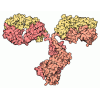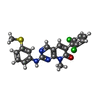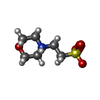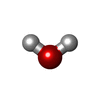Entry Database : PDB / ID : 1m52Title Crystal Structure of the c-Abl Kinase domain in complex with PD173955 PROTO-ONCOGENE TYROSINE-PROTEIN KINASE ABL1 Keywords / / / / Function / homology Function Domain/homology Component
/ / / / / / / / / / / / / / / / / / / / / / / / / / / / / / / / / / / / / / / / / / / / / / / / / / / / / / / / / / / / / / / / / / / / / / / / / / / / / / / / / / / / / / / / / / / / / / / / / / / / / / / / / / / / / / / / / / / / / / / / / / / / / / / / / / / / / / / / / / / / / / / / / / / / / / Biological species Mus musculus (house mouse)Method / / / Resolution : 2.6 Å Authors Nagar, B. / Bornmann, W. / Pellicena, P. / Schindler, T. / Veach, D. / Miller, W.T. / Clarkson, B. / Kuriyan, J. Journal : Cancer Res. / Year : 2002Title : Crystal Structures of the Kinase Domain of c-Abl in Complex with the Small Molecule Inhibitors PD173955 and Imatinib (STI-571)Authors : Nagar, B. / Bornmann, W. / Pellicena, P. / Schindler, T. / Veach, D. / Miller, W.T. / Clarkson, B. / Kuriyan, J. History Deposition Jul 8, 2002 Deposition site / Processing site Revision 1.0 Sep 18, 2002 Provider / Type Revision 1.1 Apr 28, 2008 Group Revision 1.2 Jul 13, 2011 Group Revision 1.3 Feb 14, 2024 Group Data collection / Database references ... Data collection / Database references / Derived calculations / Refinement description Category chem_comp_atom / chem_comp_bond ... chem_comp_atom / chem_comp_bond / database_2 / pdbx_initial_refinement_model / struct_ref_seq_dif / struct_site Item _database_2.pdbx_DOI / _database_2.pdbx_database_accession ... _database_2.pdbx_DOI / _database_2.pdbx_database_accession / _struct_ref_seq_dif.details / _struct_site.pdbx_auth_asym_id / _struct_site.pdbx_auth_comp_id / _struct_site.pdbx_auth_seq_id
Show all Show less
 Yorodumi
Yorodumi Open data
Open data Basic information
Basic information Components
Components Keywords
Keywords Function and homology information
Function and homology information
 X-RAY DIFFRACTION /
X-RAY DIFFRACTION /  SYNCHROTRON /
SYNCHROTRON /  MOLECULAR REPLACEMENT / Resolution: 2.6 Å
MOLECULAR REPLACEMENT / Resolution: 2.6 Å  Authors
Authors Citation
Citation Journal: Cancer Res. / Year: 2002
Journal: Cancer Res. / Year: 2002 Structure visualization
Structure visualization Molmil
Molmil Jmol/JSmol
Jmol/JSmol Downloads & links
Downloads & links Download
Download 1m52.cif.gz
1m52.cif.gz PDBx/mmCIF format
PDBx/mmCIF format pdb1m52.ent.gz
pdb1m52.ent.gz PDB format
PDB format 1m52.json.gz
1m52.json.gz PDBx/mmJSON format
PDBx/mmJSON format Other downloads
Other downloads 1m52_validation.pdf.gz
1m52_validation.pdf.gz wwPDB validaton report
wwPDB validaton report 1m52_full_validation.pdf.gz
1m52_full_validation.pdf.gz 1m52_validation.xml.gz
1m52_validation.xml.gz 1m52_validation.cif.gz
1m52_validation.cif.gz https://data.pdbj.org/pub/pdb/validation_reports/m5/1m52
https://data.pdbj.org/pub/pdb/validation_reports/m5/1m52 ftp://data.pdbj.org/pub/pdb/validation_reports/m5/1m52
ftp://data.pdbj.org/pub/pdb/validation_reports/m5/1m52

 Links
Links Assembly
Assembly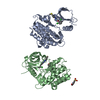
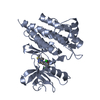
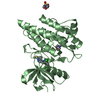
 Components
Components

 X-RAY DIFFRACTION / Number of used crystals: 1
X-RAY DIFFRACTION / Number of used crystals: 1  Sample preparation
Sample preparation SYNCHROTRON / Site:
SYNCHROTRON / Site:  ALS
ALS  / Beamline: 5.0.2 / Wavelength: 1.1 Å
/ Beamline: 5.0.2 / Wavelength: 1.1 Å Processing
Processing MOLECULAR REPLACEMENT
MOLECULAR REPLACEMENT Movie
Movie Controller
Controller


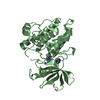



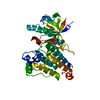


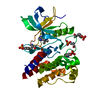
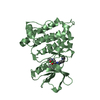
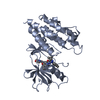
 PDBj
PDBj
